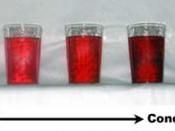Sedimentation
Abstract
Sedimentation is the process of separating a liquid mixture of suspended particles into clear supernatant liquid and denser slurry having a higher concentration of solids. This is usually accomplished by allowing the particles to settle through the force of gravity, mechanically using centrifugal force, or electrostatically using an electric current. Continuous sedimentation tanks are usually used in wastewater treatment facilities to separate suspended particles from wastewater.
This experiment aims to determine the effect of initial concentration and initial height of the slurry on its settling characteristics. Using a set of data obtained from the experiment, a continuous thickener or clarifier must then be designed. The batch sedimentation experiment was accomplished by measuring the height of the clear liquid interface at two-minute intervals using initial concentrations of 25, 50, and 75 grams per liter and initial volumes (convertible to height) of 1000, 900, and 800 milliliters. Two trials were conducted for each matrix.
From the data, it was observed that as the initial concentration of slurry is increased, the initial settling velocities decrease. The initial height has no effect on the initial settling velocity but can affect the rate at which solids compact. However, it was found that how the height affects compaction can be unpredictable. For the design of a thickener using batch sedimentation data, the required area was calculated using the Coe and Clevenger, and the Talmadge and Fitch methods. The results were 1.3112 m2 and 2.2714 m2, respectively.
During the course of the experiment, various problems were encountered that may have lead to slight errors. These problems were usually problems of measurement. Using masking tape can cause slight errors if not applied to the cylinder properly. There were slight difficulties during the initial stirring of the slurry because of the lack of long stirring rods. Furthermore,


